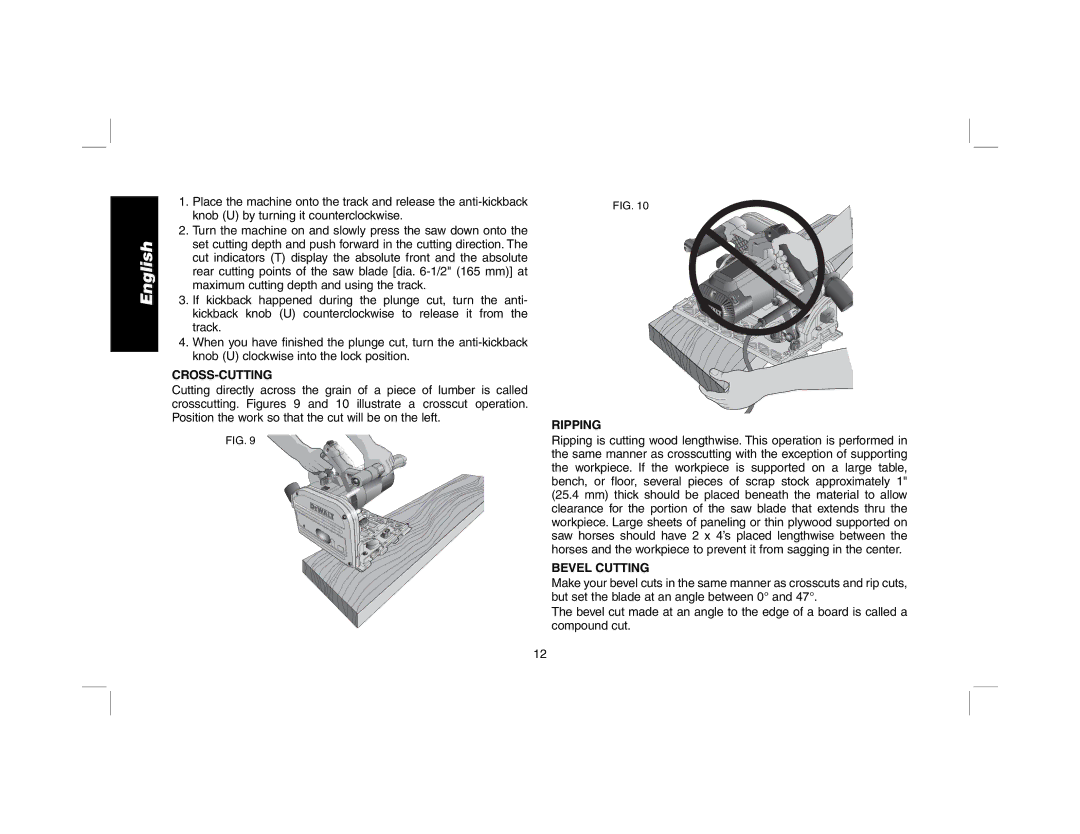
English
1.Place the machine onto the track and release the
2.Turn the machine on and slowly press the saw down onto the set cutting depth and push forward in the cutting direction. The cut indicators (T) display the absolute front and the absolute rear cutting points of the saw blade [dia.
3.If kickback happened during the plunge cut, turn the anti- kickback knob (U) counterclockwise to release it from the track.
4.When you have finished the plunge cut, turn the
CROSS-CUTTING
Cutting directly across the grain of a piece of lumber is called crosscutting. Figures 9 and 10 illustrate a crosscut operation. Position the work so that the cut will be on the left.
FIG. 9
FIG. 10
RIPPING
Ripping is cutting wood lengthwise. This operation is performed in the same manner as crosscutting with the exception of supporting the workpiece. If the workpiece is supported on a large table, bench, or floor, several pieces of scrap stock approximately 1" (25.4 mm) thick should be placed beneath the material to allow clearance for the portion of the saw blade that extends thru the workpiece. Large sheets of paneling or thin plywood supported on saw horses should have 2 x 4’s placed lengthwise between the horses and the workpiece to prevent it from sagging in the center.
BEVEL CUTTING
Make your bevel cuts in the same manner as crosscuts and rip cuts, but set the blade at an angle between 0° and 47°.
The bevel cut made at an angle to the edge of a board is called a compound cut.
12
